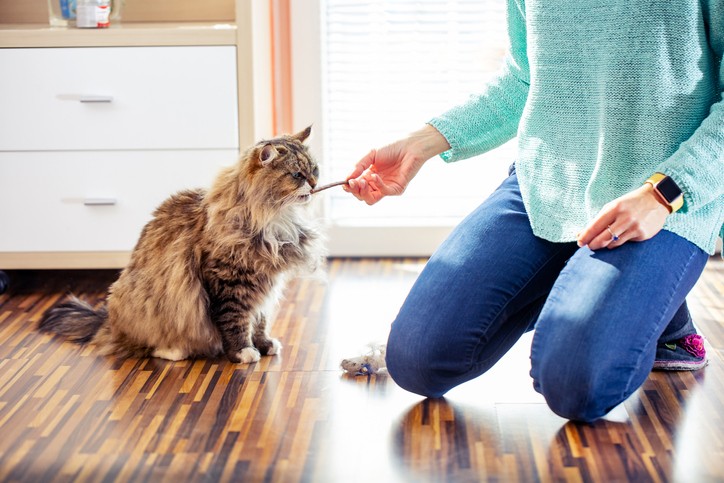
6 Tips for Training a Cat
Did you know you can train a cat, much like you might train a dog? Although cats may not be quite as interested in being trained as dogs typically are, there are several options you can choose if you’re thinking of training your feline friend.
Below, we’ll walk you through some of the most basic tips you can consider when you want to train your cat. You can use this advice to get started or to figure out the direction you want to take with your pet’s training instead. Read on to find out more!
1. Start with Potty Training
If you have a brand new baby kitten, you’ll need to work on potty training your pet to use the litter box before you can worry about anything else. The good news is that cats learn how to use a litter box much more quickly than dogs learn to go potty outside, so you don’t have to wait too long to get started on other training.
Young kittens should understand how to use a litter box after just a few days of practice. If you want to help your kitten learn, encourage them with some kitten-safe treats.
2. Try Training “Come Here”
You can easily train your cat “come here” by associating the command with a treat. You may also want to use their name in place of the command, or you may train your cat to come when called with either their name or a command.
If you’ve ever opened a treat bag near your cat and noticed how they comes running, you’ll understand just how easy it can be to shift the command from the sound of the bag to the phrase “come here.” Slowly work on associating “come here” with your cat running to the sound of the treats, and eventually, your cat will come when called.
3. Try Training “Sit”
“Sit” is another easy command you can train your cat, and it can help you and your cat learn how to work with each other for other types of training, too. Many cats will instinctively sit down and stare at you if they think they are going to get a treat, so you can easily capture this behavior and pair it with the command “sit” with enough practice.
If your cat comes to you and sits down when asked, make sure you reward them with a treat!
4. Consider a Clicker
Clickers aren’t just for dogs! Your cat may respond well to a clicker, especially if you take the time to train them with the use of one. Every time you click the clicker, reward your cat with a treat for paying attention to the sound. Eventually, they will come to associate the noise of the clicker with a treat.
You can then use this to your advantage by rewarding your cat with a click and a treat when they do what you want. This rewarding and clicking system will go a long way toward communicating to your cat that yes, they are behaving properly.
5. Use High-Value Treats
Cats are not very interested in doing anything they don’t want to do, but most of them are highly food motivated. If you have a food-motivated cat, or even if you don’t, you should be able to entice your pet to do what you ask by giving them high-value treats.
In other words, give your cat something they wouldn’t normally get otherwise. Pieces of cheese (if your cat can tolerate dairy), small pieces of plain shredded chicken, and other similar treats are all good ideas. Don’t give your cat lunch meat, canned tuna, or any other treats that may be high in sodium, however.
6. Don’t Overdo It
Most importantly, don’t push yourself or your cat too much in a short amount of time. Take it slow and remember that training a cat isn’t an easy process, so it’s okay if it takes both of you a little while to get there.
Work on just one skill at a time until your cat has mastered that one. Then you can move on to something else, building on the skills your cat already knows. With enough time and patience, you should be able to train your cat successfully.
Let’s Get Started
If you decide you want to tackle the challenge of cat training, it’s important to be prepared. By brushing up on tips like those listed above, you’ll be well on your way to making sure you and your cat are successful in learning together.
If you need more assistance with cat training, you may want to speak to a professional. A professional cat trainer can help you figure out which areas you may need to work on with your pet and how you can best help your cat advance in their skills, too.